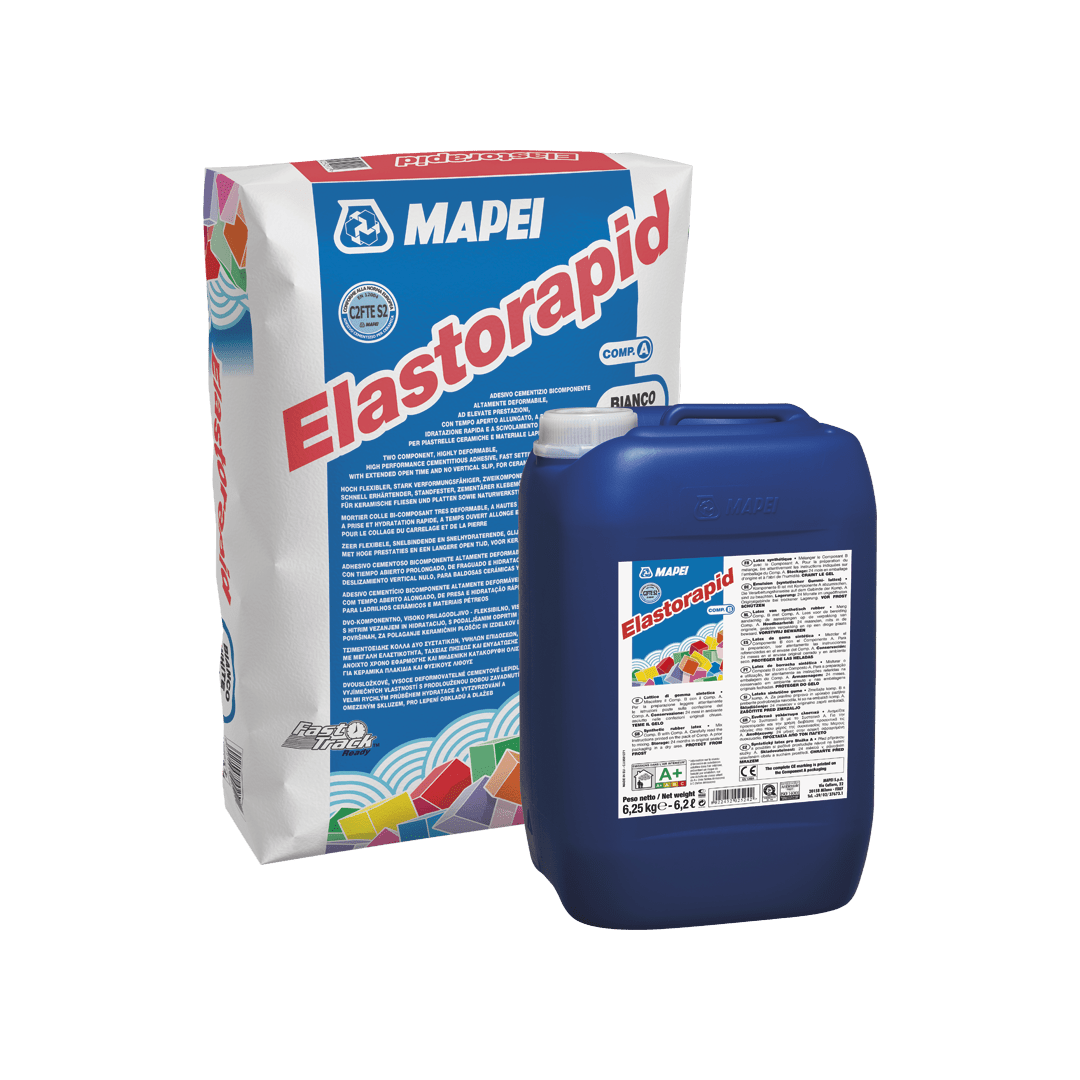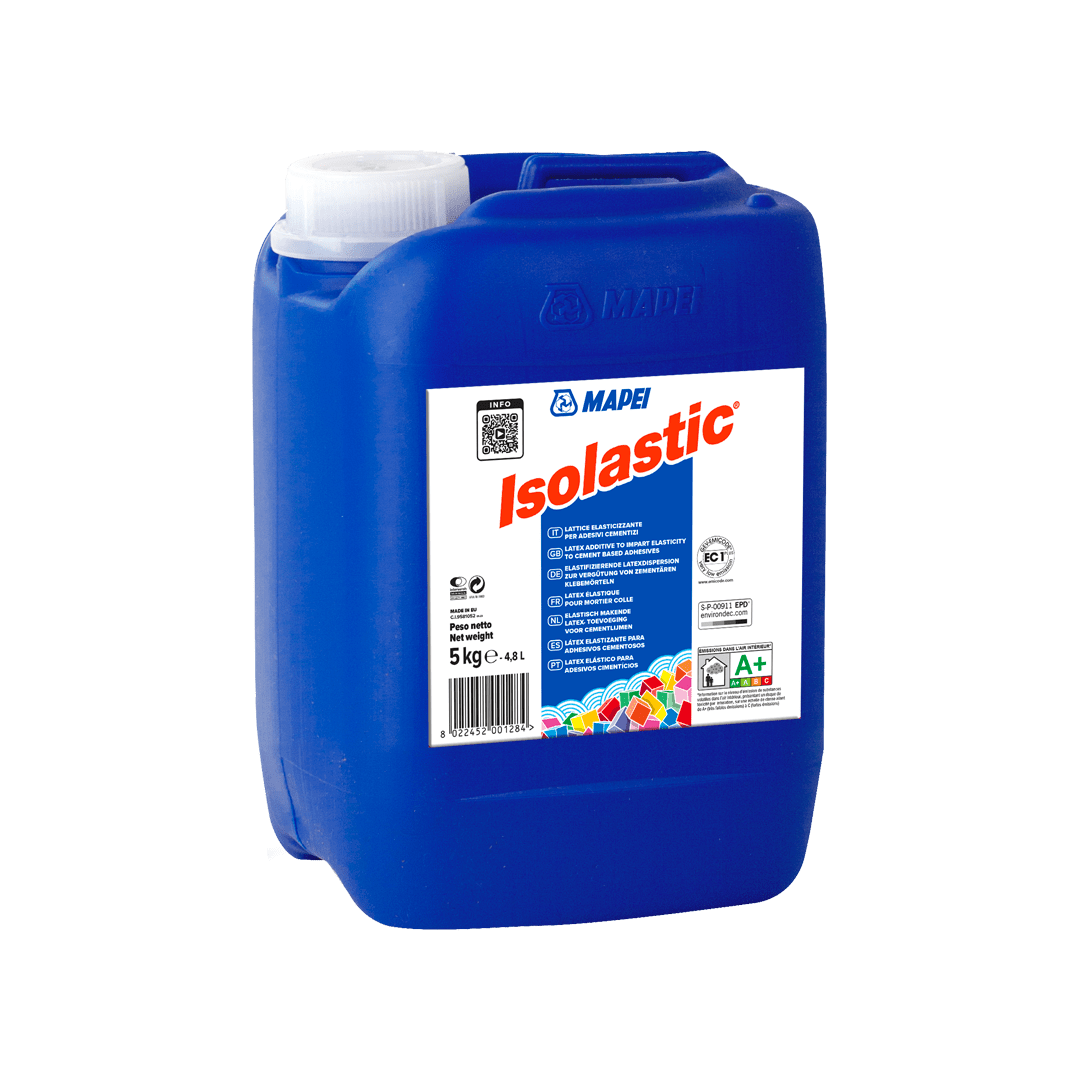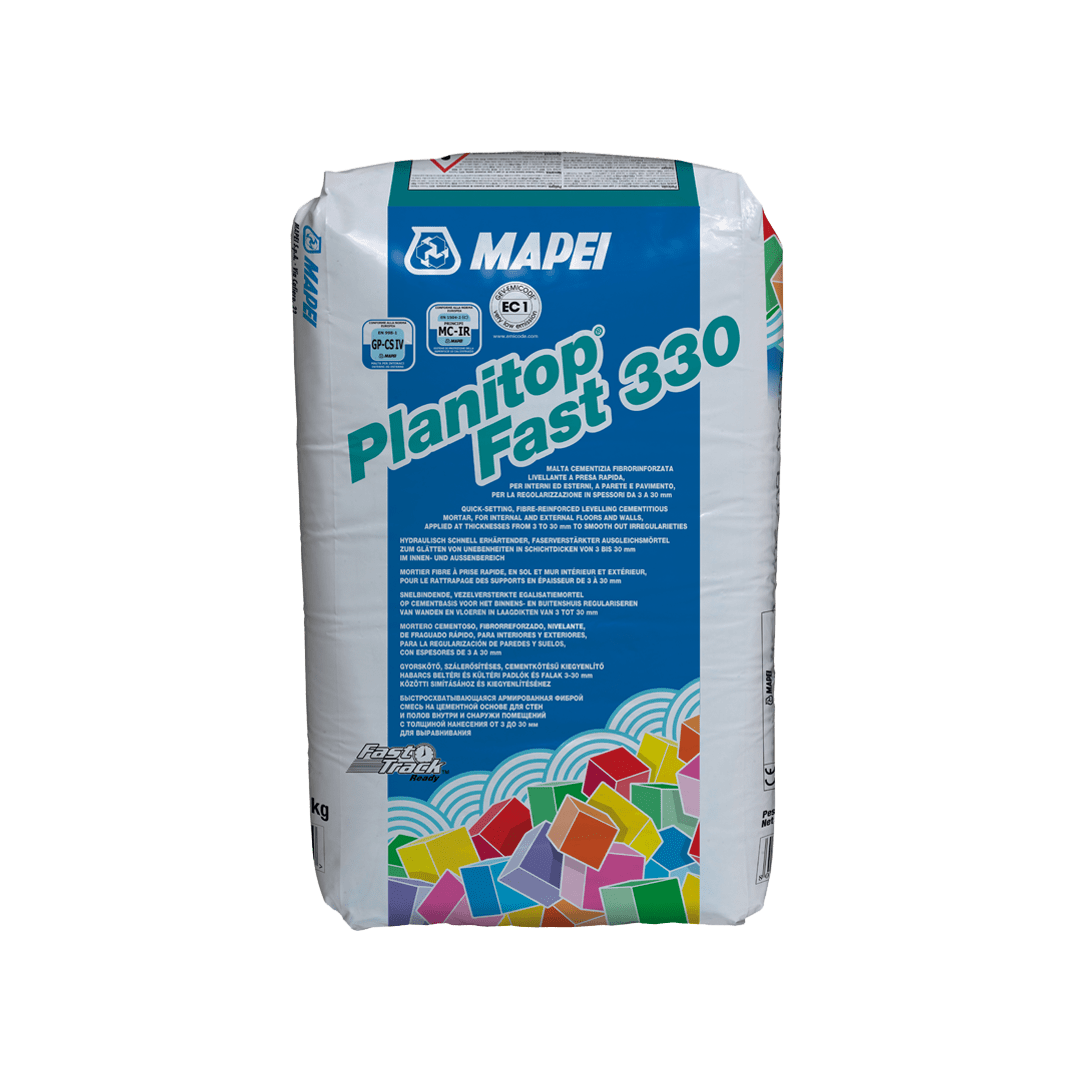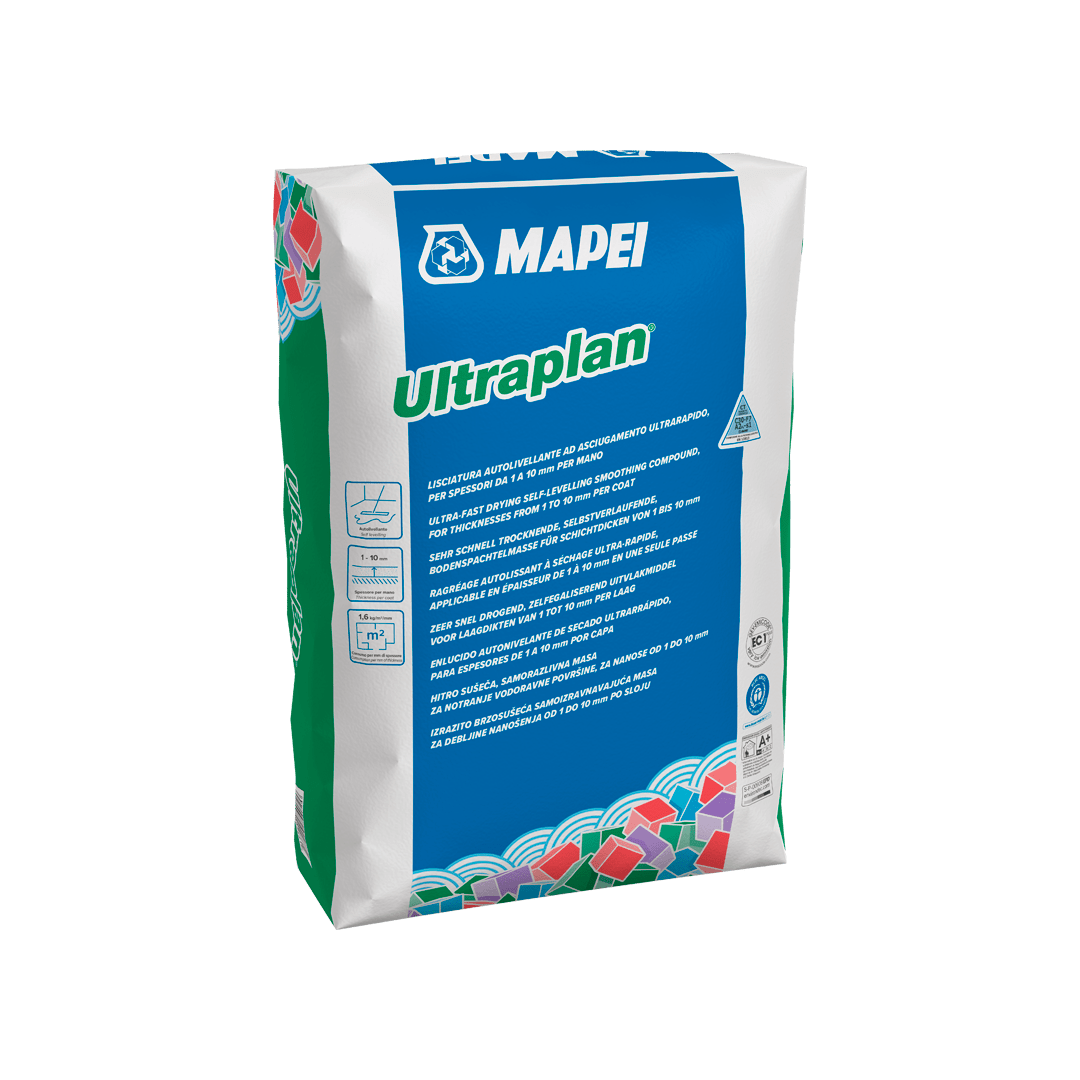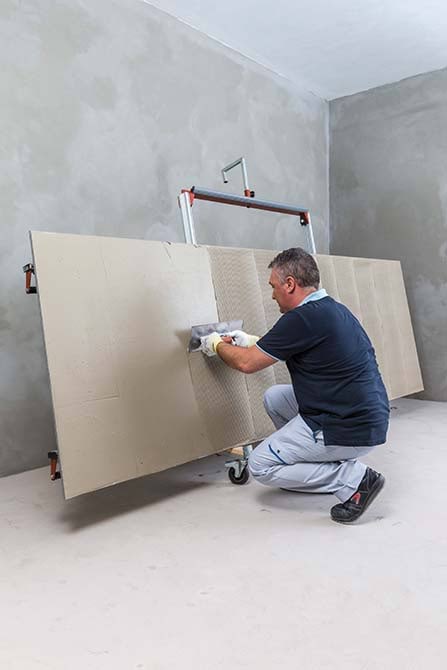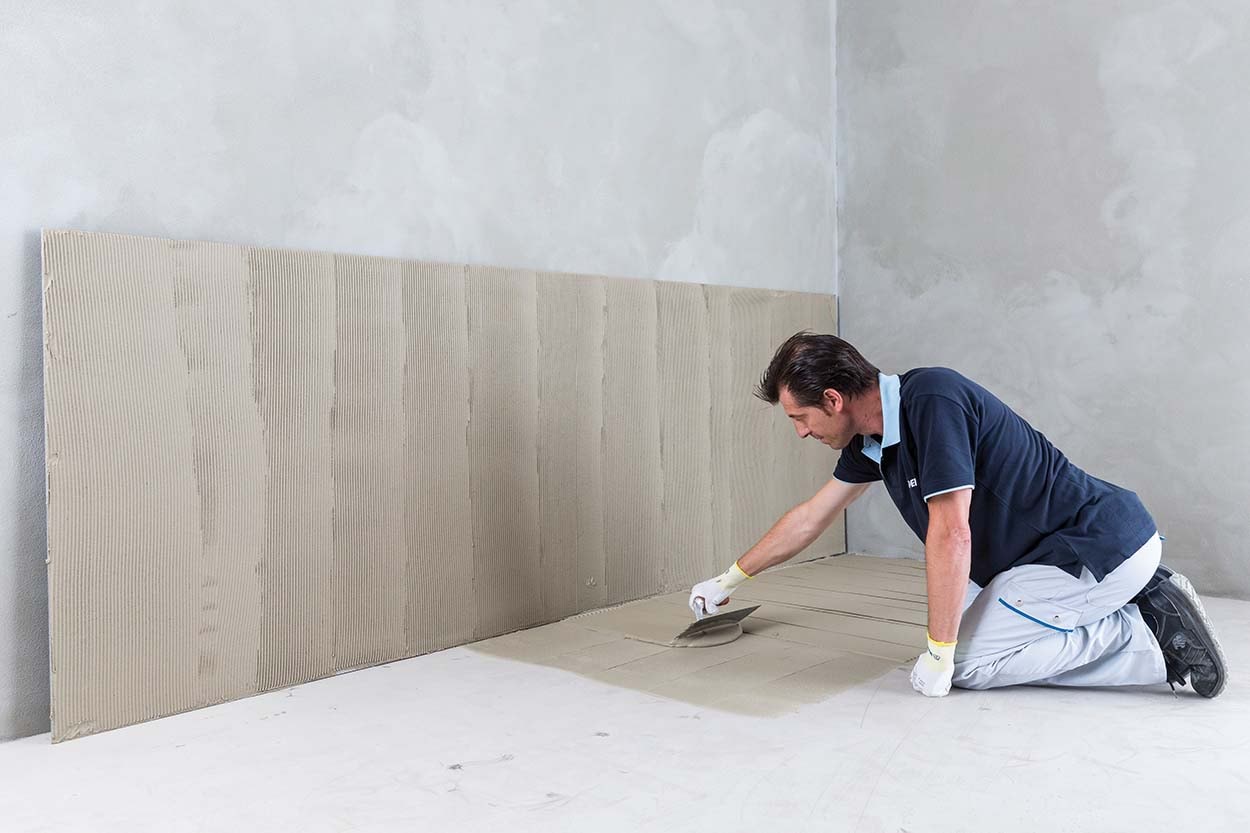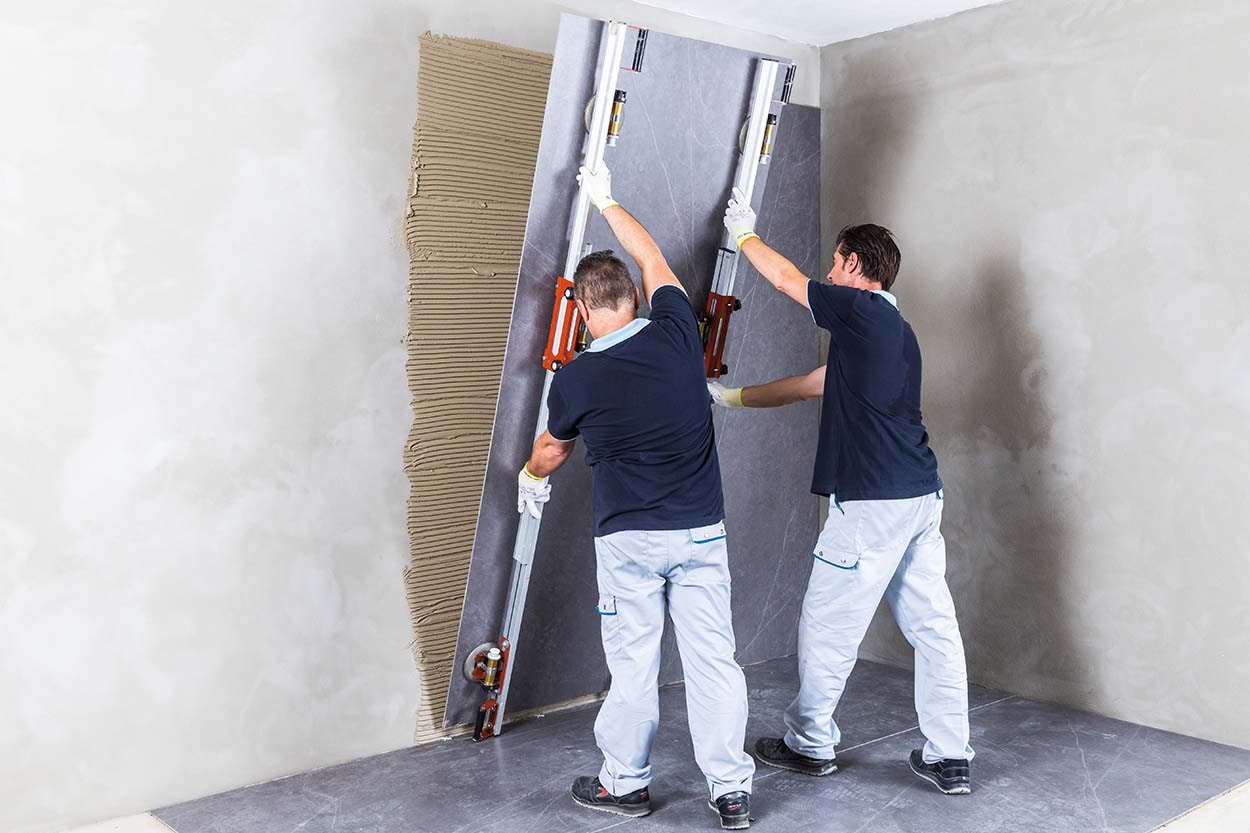Installing large format tiles
Characteristics, problems and suitable products for a type of tile in growing demand.
Large format ceramic tiles cover a larger area, require fewer gaps and breaks (grout lines and expansion joints, which are often overlooked) and create the illusion of a monolithic, seamless finish. The larger the tiles, the fewer the number of gaps or breaks in the ceramic covering. For many people, this is considered to be an advantage and is highly appreciated by architects and clients. As technicians, we should be asking ourselves: do we use the same installation system for large format tiles as the one used for small to medium size tiles? Are there any particular precautions we need to take?
WHAT DOES “LARGE FORMAT TILE” ACTUALLY MEAN?
Are tiles measuring 30 x 30 cm or 40 x 40 cm classed as large formats? We could use common sense to answer this question but, if necessary, there is the Italian standard UNI 11493.1– Ceramic tiles for walls and floors: design, installation and maintenance instructions, which specifies the following:
“…according to UNI 11493 standards […], large format tiles are defined as those having one side longer than 60 cm”.
For the purposes of this article, we will also consider tile formats of up to 3 m, and which in certain cases may even exceed these limits, with a thickness of 3 to 6 mm.
WHAT ARE THE MOST IMPORTANT FACTORS WHEN INSTALLING LARGE FORMAT TILES?
1. Movement and handling: particularly large tiles are usually handled and moved around on site using suction cups and rigid support frames. These all help to stop tiles bending too much, which could lead to them cracking or even breaking. Handling large tiles also requires a proper number of operators.
2. The substrate to which large format tiles are bonded, particularly when using thinner tiles, must be perfectly flat. This requirement is applicable for the installation of floor and wall tiles in general, but it becomes even more critical when installing large format and slim ceramic tiles or stone slabs. If the installation surface is too uneven, it could ruin the appearance of the finished covering or lead to cracking or breaking.
It is worth remembering that substrates on which ceramic tiles are to be bonded should be levelled off with a proper skimming or levelling compound (such as ULTRAPLAN, NIVORAPID, PLANITOP FAST 330 and similar products), and one should never just rely on the adhesive.
WHAT TYPE OF ADHESIVE SHOULD WE USE TO BOND LARGE FORMAT TILES?
The adhesive should be of the improved adhesion type and, in most cases (if not all!), it should also be deformable. Why?
The larger the surface area of the tile, the higher the stress and amount of work the installation surface/adhesive/tile system will be subjected to. Natural deformations, or those induced by external events (such as temperature variations), could detach or damage the covering.
According to UNI 11493.1 standard, improved adhesion (class 2) and deformable (class S1 or S2) adhesive systems are recommended for ceramic tiles with one side measuring more than 90 or 120 cm. Deformable adhesives are characterised by their lower modulus of elasticity which makes them more efficient at "cushioning" strains caused by the different behaviour of the materials that make up the installation system.
The latest technology enables tiles to be manufactured in formats and thicknesses which, until just a few years ago, were not available on the ceramic market. They are often reinforced by applying strengthening mesh on their back face and, in general, they have very low absorbency.
Class S1 and S2 adhesives guarantee particularly high levels of adhesion, so that even very large tiles made from porcelain (a material with very low absorbency) may be bonded successfully. Beside the adhesive, grout lines, expansion joints, the double-buttering technique and a correct assessment of site conditions are all fundamental aspects that need to be considered in order to install large format tiles successfully.







